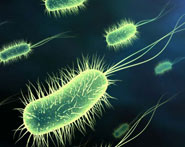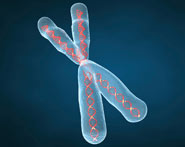


 النبات
النبات
 الحيوان
الحيوان
 الأحياء المجهرية
الأحياء المجهرية
 علم الأمراض
علم الأمراض
 التقانة الإحيائية
التقانة الإحيائية
 التقنية الحيوية المكروبية
التقنية الحيوية المكروبية
 التقنية الحياتية النانوية
التقنية الحياتية النانوية
 علم الأجنة
علم الأجنة
 الأحياء الجزيئي
الأحياء الجزيئي
 علم وظائف الأعضاء
علم وظائف الأعضاء
 الغدد
الغدد
 المضادات الحيوية
المضادات الحيوية|
Read More
Date: 19-2-2016
Date: 19-2-2016
Date: 2025-01-28
|
Radiotherapy (radiation therapy) involves treating the cancer with ionising radiation such as X-rays, gamma rays, electrons or charged atoms. Ionising radiation kills cancer cells by two mechanisms; directly damaging cancer DNA or indirectly by triggering the formation of very reactive molecules (free radicals) that also damage cancer DNA.
Two main types of radiation therapy exist: external beam radiotherapy, and brachytherapy (internal radiotherapy). External beam radiotherapy is most commonly delivered by a linear accelerator, which produces electron or photon beams. As normal tissues can also be damaged by radio therapy, treatments are planned to ensure maximum exposure of the tumour and minimal exposure of surrounding normal tissues. Improved localisation of the target volume, or tumour, can be achieved by the use of surgical clips at the site of resection and fusion of radiotherapy- planning CT scans with diagnostic MRI or PET-CT scans. Treatment planning software controls the size and shape of the beam. Intensity modulated radiotherapy (which allows for more homogeneous dose distribution), and volumetric radiotherapy (in which the shape of the radiation beam is designed to closely fit the tumour), have largely replaced conventional methods that use a limited number of square or rectangular beams. Stereotactic radiotherapy is a highly targeted method to deliver focused radiation beams from many different angles which converge on the tumour to deliver high doses precisely. Proton therapy uses a cyclotron to produce beams of high-energy protons, which deposit their radiation dose by a means that allows further sparing of normal tissues.
Brachytherapy, or internal radiation therapy, involves the direct application of a radioactive source onto or into a tumour. This allows the delivery of a high, localised dose of radiation. Brachytherapy is a common treatment for cancers of the prostate, uterus and cervix. Most commonly, an applicator device is used to deliver a radioactive source to the tumour for a set time, typically 10–20 minutes. In other cases, such as in prostate cancer, small radioactive seeds may be permanently placed, releasing radiation slowly over several months. Radioactive liquid treatments, such as 223radium for bone metastases from prostate cancer or 131iodine for thyroid cancers are other examples of internal radiation therapy.
Biological differences between normal and tumour tissues are exploited to obtain therapeutic benefit. Fundamental to this is fractionation, which entails delivering the radiation as a number of small doses on a daily basis. This allows normal cells to recover from radiation damage but recovery occurs to a lesser degree in malignant cells. Fractionation regimens vary depending on the tumour being treated, the total radiation dose to be delivered and the intent of treatment. Curative, or radical treatments typically deliver a higher overall dose in 20–35 fractions over 4–7 weeks. For palliative treatments a smaller dose given over 1–10 fractions is usually adequate. Malignant tissues vary widely in their sensitivity to radiotherapy. Germ cell tumours and lymphomas are extremely radiosensitive, and relatively low doses are adequate for cure. However, most other cancers require higher doses. Normal tissue also varies in its radiosensitivity, with the central nervous system, small bowel and lung being among the most sensitive.
The side-effects of radiotherapy depend on the site being treated, the tissue’s radiosensitivity and the dose delivered. For example, skin reactions are common with high-dose radical head and neck cancer treatments, or proctitis and cystitis with treatment to the bladder or prostate. These acute reactions typically settle within a few weeks after treatment. Late effects of radiotherapy develop more than 6 weeks after treatment and occur in 5%–10% of patients. Examples include brachial nerve damage and subcutaneous fibrosis after breast cancer treatment. There is also a risk of inducing new cancer after radiotherapy, which varies depending on the site treated and on whether the patient has had other treatment such as cytotoxic chemotherapy.



|
|
|
|
التوتر والسرطان.. علماء يحذرون من "صلة خطيرة"
|
|
|
|
|
|
|
مرآة السيارة: مدى دقة عكسها للصورة الصحيحة
|
|
|
|
|
|
|
نحو شراكة وطنية متكاملة.. الأمين العام للعتبة الحسينية يبحث مع وكيل وزارة الخارجية آفاق التعاون المؤسسي
|
|
|